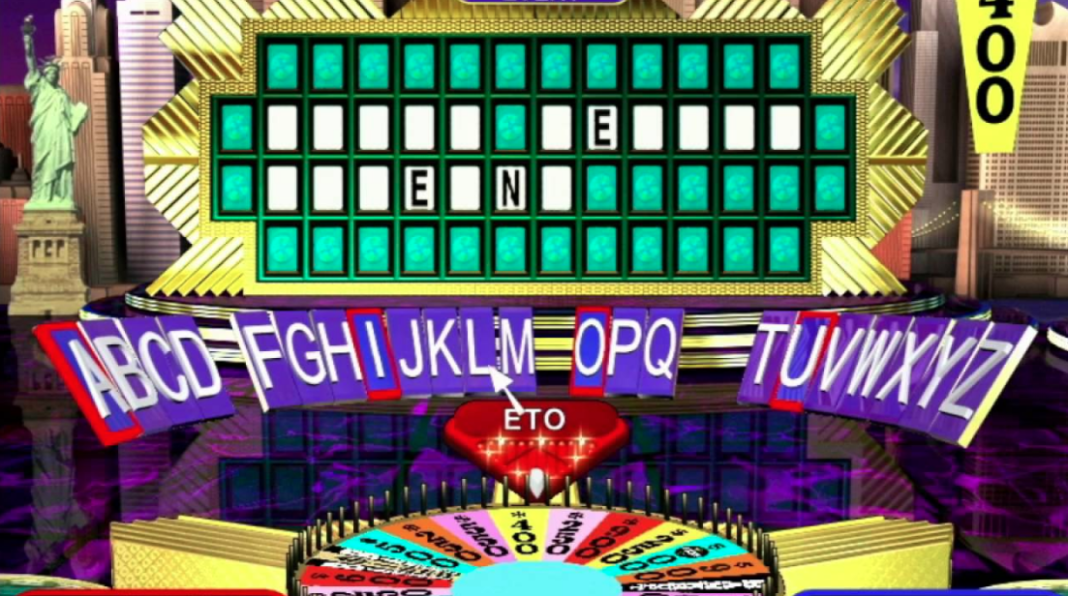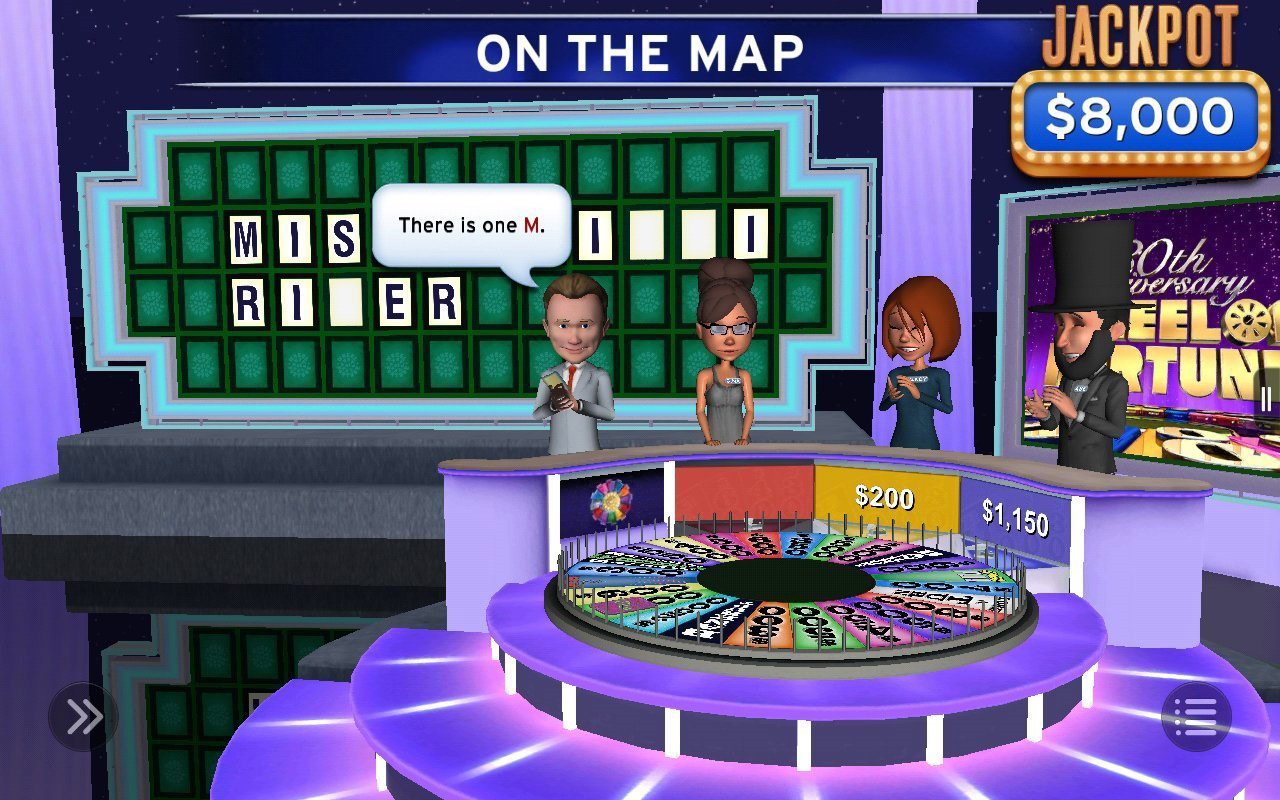- To win a million dollars on Wheel of Fortune is extremely difficult! First, you have to hit the million dollar mark on the big wheel (a 1-in-72-chance). After that happens, you must then solve the.
- Wheel of fortune? With some knowledge, law of physics and impeccable hand-eye coordination, not quite. I am in control only when the starting point of the wheel is favorable to land on Nth Metal. So far I’m unable to deliver results when it starts outside of the spaces I’ve mentioned. Help Reddit App Reddit coins Reddit premium Reddit.
- The Reddit-GameStop Saga Is A ‘Billions’ Episode Happening In Real-Time. Pat Sajak has a history of speaking his mind when it comes to what contestants say or do on Wheel of Fortune.
We’d like to buy an ‘A,’ please.
This 'Wheel of Fortune' puzzle solve stunned Pat Sajak Pat Sajak called this puzzle 'daunting' before the contestant solved it in just a few seconds. 9, 2020, 3:04 PM UTC.
DAAAAAAAANG.
On Friday’s Wheel of Fortune, which slipped under the radar as it was preempted by March Madness, contestant Robert Santoli (Reddit user RAS310) crushed the competition with such ridiculousness that at one point, host Pat Sajak told him to slow down.
His sheer dominance began in the very first round, when the 23-year-old Virginia resident solved the puzzle with just ONE LETTER on the board. He pressed the buzzer so fast that Sajak thought it was an accident.
It wasn’t.
From there, Santoli kept up the momentum, correctly guessing words and phrases, and raking in the prize money. The enthusiasm of the two other players, Bonnie and Noelle, noticeably waned over the course of the game. “They were still all-smiles, but looking at their facial expressions on the show, I could tell they just wanted to strangle me, and I don’t blame them,” he described on the WOF fan forum Buy a Vowel.
Here’s a highlight reel of Santoli’s amazing game.
In the end, he won $76,086 in cash and prizes (pre-taxes), and goes down in Internet history as one of the most delightfully gleeful WOF whizzes.
Pure joy.
In Reddit’s Videos community, Santoli showed up to comment about the epic game, and ended up answering questions about his game strategies, what happens off-camera and what he’ll do with his winnings in an impromptu—and quite fascinating—AMA.
Here’s what we learned.
Contestants are able to research the categories before the show.
Santoli’s episode was sponsored by Carnival Cruise Line so producers announced that the puzzles would be nautical-themed.

Rust Gambling Pattern
Every move he made was strategic, down to the way he spun the wheel.
His tip for Bonus Round contestants: Choose P and H.
$33,000 is the standard prize in Bonus Wheel. Santoli was hoping he’d win more—and he did. $45,000!
He wrote on Buy a Vowel, “If it is $33,000, I’ll still cheer and everything, of course. I’d be like those Deal or No Deal contestants who clap and say ‘That’s okay, that’s okay’ after eliminating a $100,000+ case.”
In the middle of the game, Santoli apologized to the two other contestants while he was doing so well.
Of course, everyone knew how they were really feeling:
Sajak appeared a little miffed at how the game was unraveling, but Santoli says he was truly supportive.
Another fun WOF fact: Contestants must clap for themselves.
That guy that came up to him at the end of the show and gave him a high ten? He’s none other than Emil De Leon, a former WOF contestant whose puzzle-solving skills went viral. They are good friends.
Think you have the brains to be on the show? Producers aren’t looking for contestants who’ll show off.
An avid game show fan, Santoli hopes to try out for more shows, but he’ll have to wait a year. He’d like to get on the upcoming revival of the classic game show Pyramid. For now, here’s what he’ll do with his winnings.
From one redditor to another:
See the full discussion in the original Reddit post.
The Wheel Strategy is a systematic and very powerful way to sell covered calls as part of a long-term trading strategy.
The process starts with a selling a cash secured put. The investor also needs to be willing, and have the funds available to purchase 200 shares.
After selling the initial put, the put either expires or is assigned. If it expires, they keep the premium and start again if they are still bullish on the stock, or they move on to another stock. If they are assigned, they take ownership of 100 shares.
At this point they sell a call to turn it into a covered call and they also sell a new put.
From here, if the stock goes up through your call, you are assigned and the stock is called away leaving you flat. As the stock went up, your sold put expires worthless.
If the stock goes down, you are assigned on the second put, and you now have your full allocation of 200 shares. As the stock went down, the call expires worthless.
Now that you own 200 shares, you sell two calls.
If the stock goes up through the calls, the stock is called away and your position is flat again.
Through the process you have collected 5 option premiums, plus any dividends while holding the shares, plus potentially some capital gains, depending at which strikes you sold the calls and puts.
If the stock continues down, you can continue to sell 2 covered calls each month.
This process is best explained in the following diagram:
This is just the theory of course, and in practice, things don’t always work out so smoothly.
One trap investors can fall in to is continuing to hold on to shares as the stock falls due to the attraction of generating option premium.
Stop losses are important. Have a think how this strategy would have performed on a stock like Lehman Brothers during the Financial Crisis.
If a stock has dropped 10%, it might be time to cut and run. You don’t want to keep adding to a losing position by buying more shares. In this case what can happen is that you end up selling calls for less than your cost basis, meaning that even if your stock goes up through your calls, you are still left with a loss.
Here are some things you might want to consider when looking at this strategy:
- Sell the first put when implied volatility is in the higher end of the 6-month range
- Wait for a 5% pullback before selling the first put
- Place a stop loss 10-15% below where the stock was trading when the put was first sold
- Adjust your stop loss lower when multiple puts have expired worthless
- Will you sell the first put slightly out-of-the-money or at-the-money?
- Will you sell the calls slightly out-of-the-money or at-the-money?
- Sell the first put when RSI is below 30
- Stick to low beta, high dividend stocks. Think of stocks you would be happy to own in your retirement account
- You can also use this strategy on ETF’s to reduce the bankruptcy risk
- If the stock continues to fall, it’s ok to sell a call below cost only if you have received enough put premiums to offset the cost basis
- If you have sold numerous puts, your actual cost basis can be very low
THEORETICAL EXAMPLE
Let’s look at a theoretical example to see exactly how the strategy works and then I’ll share some trades from my own account.
In April, 2014 JNJ was trading at $98.
We start by selling a June $95 put for $1.50.
JNJ then falls below $95; we are assigned on the put and take ownership of 100 shares with a cost basis of $93.50 (95 less the 1.50 option premium).
Now we sell an October $97.50 Call for $1.50 and an October $90 Put for $1.50.
So far we have received a total of $450 in option premium (3 x $150) and we have paid $9,500 for the 100 shares. The cost basis is $9,050 or $90.50 per share.
As October expiry, JNJ falls below $90. We are assigned on another 100 shares at $90.
We now sell two January $95 calls for $1.50.
We have been assigned on the shares at $95 and $90 totaling $18,500.
Reddit Wheel Of Fortune Ama
We’ve received 5 x $150 in premium from call and put sales.
Our net cost basis is $17,750 or $88.75 per share.
Wheel Of Fortune Technicality Reddit
If JNJ is below $95 at January expiry, we sell two more calls and continue to collect the dividends.
If JNJ is above $95, our 200 shares are called away leaving our position flat. The total profit is $95 – $88.75 x 200 = $1,250.
Not bad for a stock that has fallen from $98 to $95 over the course of the trade.

TWO REAL TRADE EXAMPLES
The following is an example that I like to share with coaching clients. It’s a good example because it occurred during the 2008-2009 financial crisis. On a stock that dropped 42%, I made a profit of $1,440.
However, I was lucky, and at one point I was in a pretty big hole. Realistically I should have been stopped out of the trade in mid to late 2008 but I stuck with it and rode it out. If someone tried this on Bear Sterns, Lehman Brothers or AIG, they wouldn’t have been so lucky.
Here is the trade history. You can see that I started the trade via a covered call on GE when it was trading at $31.98.
Over the course of the trade I bought stock as follows:
100 shares at $31.78 in April 2008
100 shares at $26.57 in July 2008 average cost now $29.18
200 shares at $8.95 in February 2009 average cost now $19.06
200 share at $16.00 in December 2009 average cost now $18.04
In total I generated $981.28 in option premiums after commissions and received $342.30 in dividends after tax.
To close the trade, I ended up buying back the $18 calls in December 2010 and selling the shares for $18.32.
All up the trade made a profit of $1,440 while the stock declined by 42% over the course of the trade.
Even though I’ll freely admit the trade wasn’t managed very well, you can see how powerful this strategy can be.
Here is another trade example that worked out a little more smoothly than the GE trade.
You can see that in this case, EWZ rose by 6.03% over the course of the trade.

The profit on the wheel trade was $438 on capital at risk of $6,200 which equates to a 7.08% return.
The wheel strategy is a really powerful income strategy that can enhance your long-term returns. There are risks and it’s important that investors are careful not to get sucked in to averaging down on losers.
Wheel trades can be very straight forward as we saw in the EWZ example, or they can be very painful and tie up capital for a long time as we saw in the GE trade.
What do you think about this strategy? Let me know in the comments below.